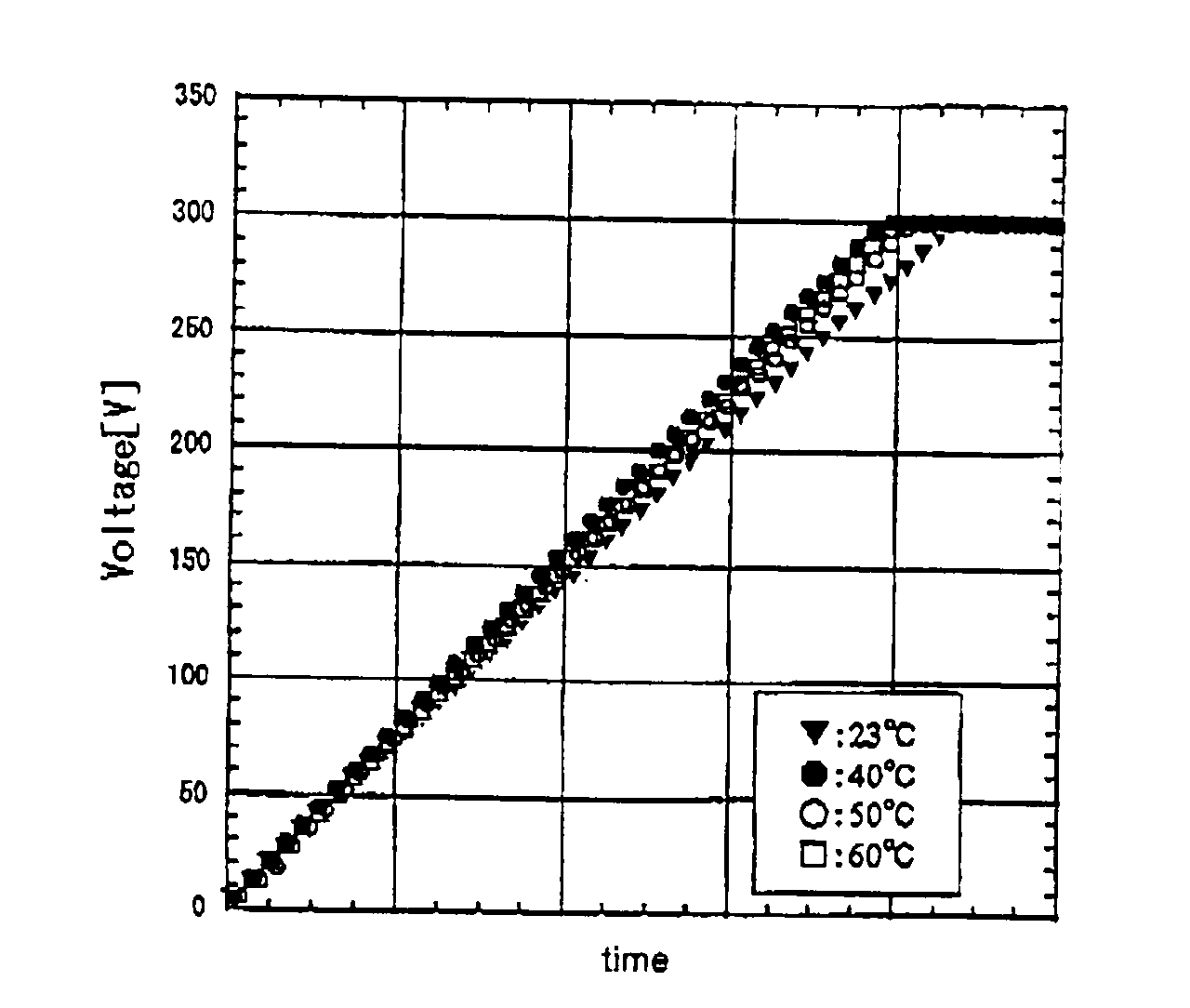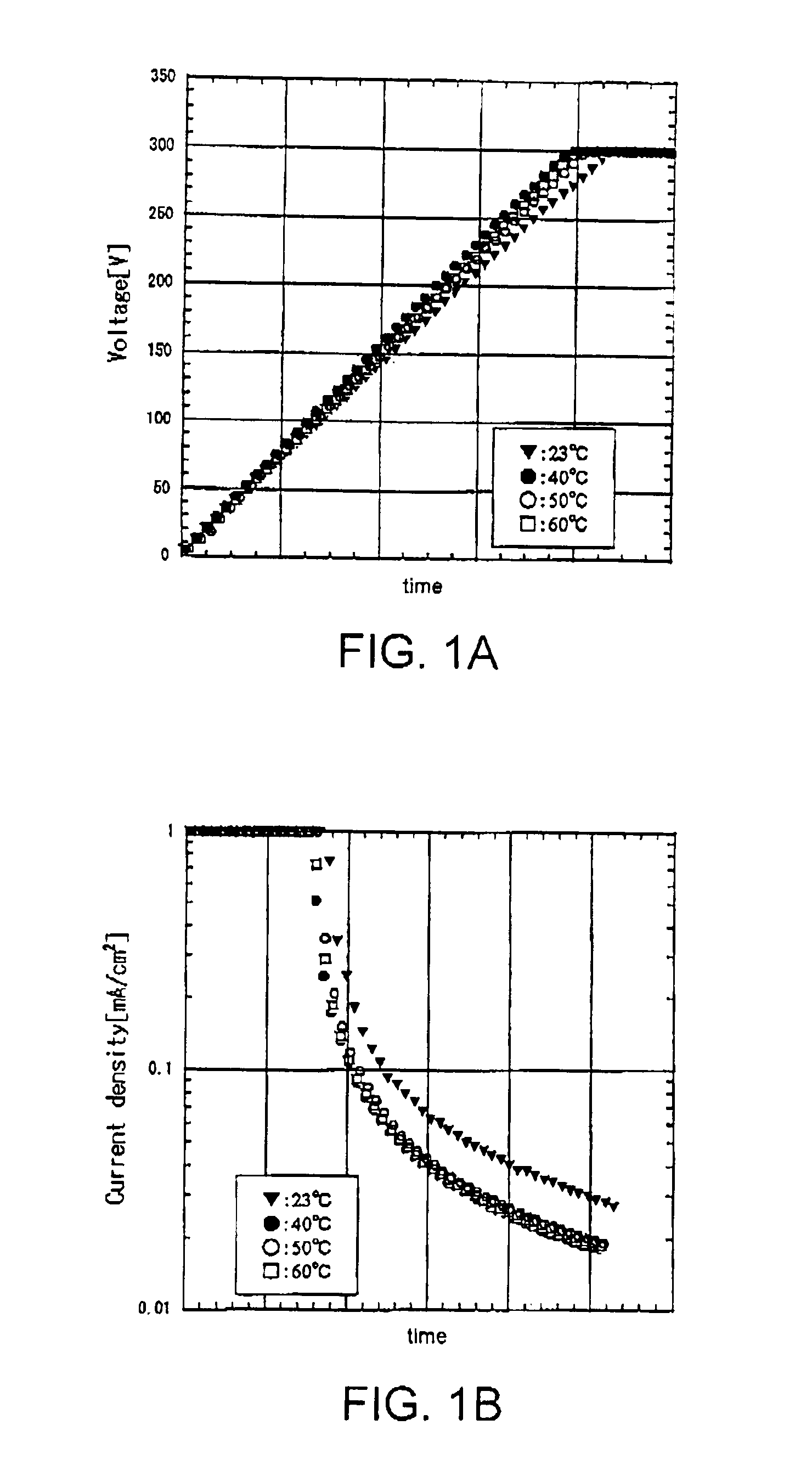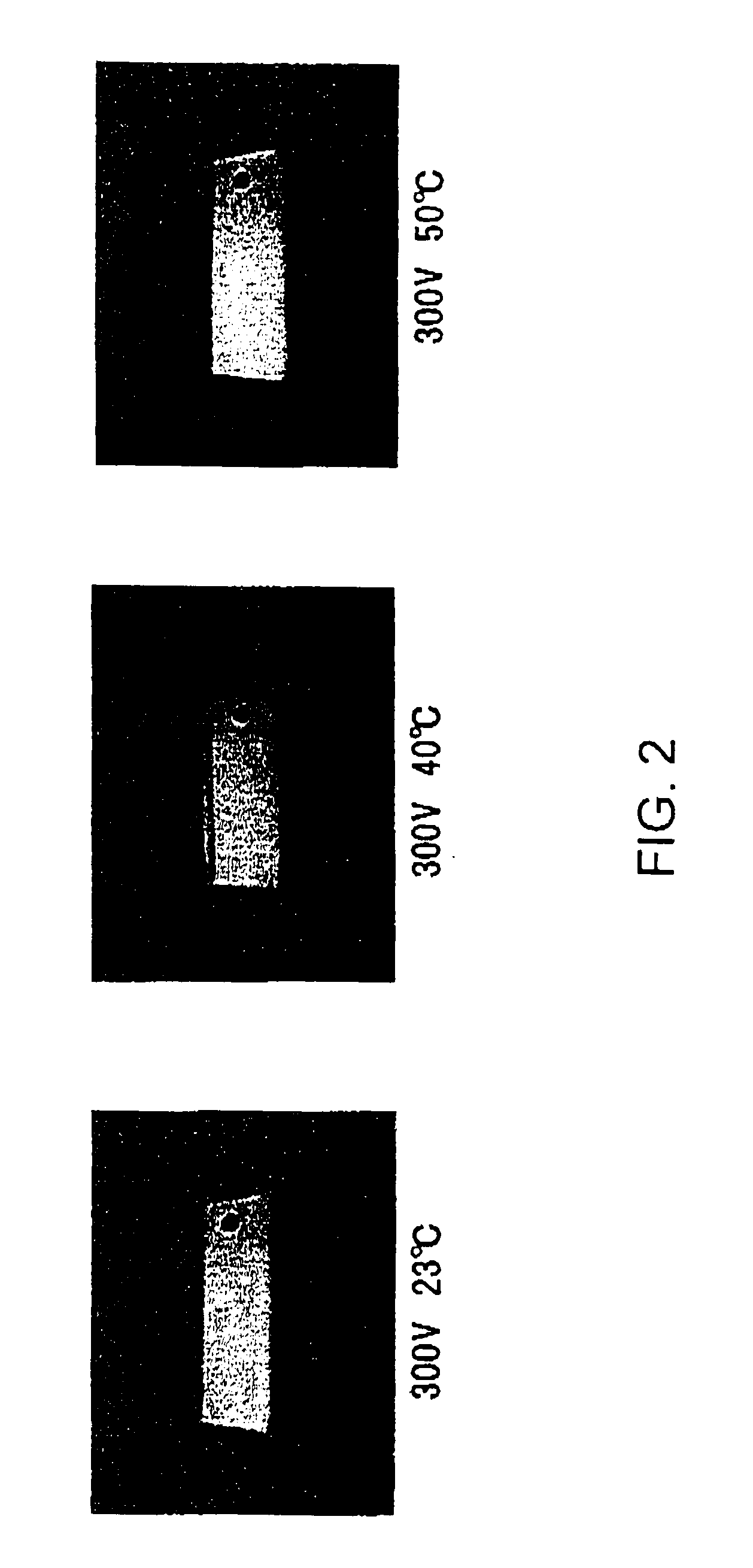Metal member having a metal oxide film and method of manufacturing the same
a metal oxide film and metal member technology, applied in the direction of coatings, electrolysis components, electrolysis processes, etc., can solve the problems of difficult to completely suppress difficult to suppress the formation of pores, and difficulty in completely suppressing the formation of voids or gas pools, etc., to achieve shorten the time for anodic oxidation, improve productivity, and improve quality
- Summary
- Abstract
- Description
- Claims
- Application Information
AI Technical Summary
Benefits of technology
Problems solved by technology
Method used
Image
Examples
example 1
[0117]Next, description will be made of anodic oxidation when diethylene glycol (DiEG) was used as a nonaqueous solvent. As an aluminum alloy, use was made of a high-purity aluminum alloy (S2M) containing 20 wt % Mg, 0.1 wt % Zr, and specific elements including Fe, Co, Mn, Zn, and Cr of in total content of 0.005 wt %, and balance Al. The anodization solution was prepared by the use of ammonium adipate as a solute and diethylene glycol as a main solvent and adjusted to have a pH 7.0. By the use of the anodization solution, anodic oxidation was performed.
[0118]FIGS. 1A and 1B show voltage and current characteristics with time during the anodic oxidation. At a current density of 1 mA / cm2, constant-current anodic oxidation was performed until the anodization voltage reached 300 V (FIG. 1A). Then, constant-voltage anodic oxidation was performed with the anodization voltage kept at the above-mentioned reached voltage (FIG. 1B). The graphs in the figures show the voltage (FIG. 1A) and the ...
example 2
[0120]The aluminum alloy and the solute, the main solvent, and pH of the anodization solution are same as those in Example 1. At the anodization temperature of 23° C., anodic oxidation was performed at the anodization voltage of 300 V, 350 V, and 400 V. The surface conditions of the aluminum oxide films thus obtained were observed. Further, at the anodization temperature of 40° C., anodic oxidation was performed at the anodization voltage of 300 V, 350 V, and 400 V. The surface conditions of the aluminum oxide films thus obtained were observed. The surface conditions of the former and the latter are shown in an upper half and a lower half in FIG. 4, respectively. When the temperature of the anodization solution is elevated, the surface conditions exhibit bright surfaces even if the anodization voltage is increased. The aluminum oxide film obtained at 400 V and 40° C. and having brightness had a thickness of 0.6 μm. At 350 V and 300 V, the thickness was 0.53 μm and 0.45 μm, respectiv...
example 3
[0125]In Examples 1 and 2, diethylene glycol is used as the main solvent. In Example 3, in order to control the viscosity of the anodization solution, a second component was added to diethylene glycol and water. By the use of the anodization solution adjusted in viscosity, anodic oxidation was performed.
[0126]FIG. 9 shows physical properties of organic solvents as the second component, including the viscosity, the dielectric constant, and so on.
[0127]FIG. 10 shows a voltage characteristic representing the relationship between the voltage and the time when the aluminum oxide film was formed by anodic oxidation using various kinds of anodization solutions containing diethylene glycol (Di-EG) with isopropyl alcohol (IPA), acetone, dimethylsulfoxide (DMSO), N,N-dimethylformamide (DMF), and dioxane added thereto, respectively. The ratio of the second component with respect to diethylene glycol is shown in the figure. This figure also shows the case where the second component is not added...
PUM
| Property | Measurement | Unit |
|---|---|---|
| pH | aaaaa | aaaaa |
| viscosity | aaaaa | aaaaa |
| viscosity | aaaaa | aaaaa |
Abstract
Description
Claims
Application Information
 Login to View More
Login to View More - R&D
- Intellectual Property
- Life Sciences
- Materials
- Tech Scout
- Unparalleled Data Quality
- Higher Quality Content
- 60% Fewer Hallucinations
Browse by: Latest US Patents, China's latest patents, Technical Efficacy Thesaurus, Application Domain, Technology Topic, Popular Technical Reports.
© 2025 PatSnap. All rights reserved.Legal|Privacy policy|Modern Slavery Act Transparency Statement|Sitemap|About US| Contact US: help@patsnap.com



